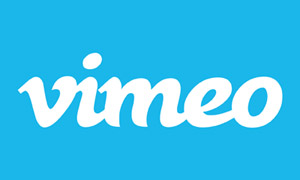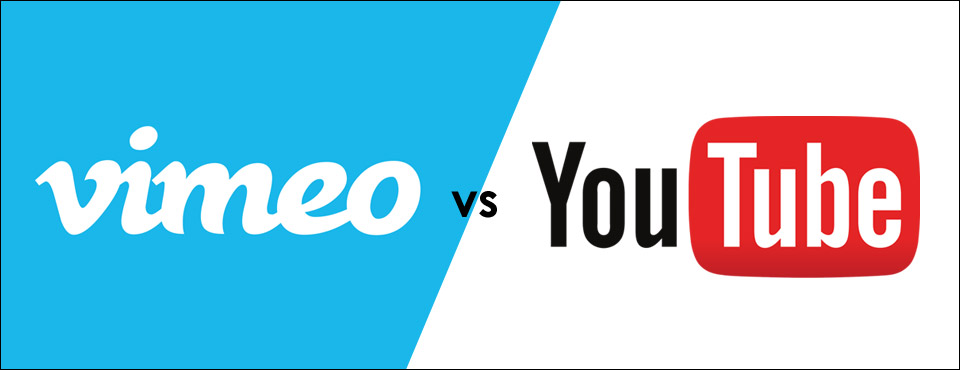Ever since their inception, the general affiliation for vimeo has been “this service is like youtube but for professionals” and of course youtube was “this is where you put videos of your cats”. A lot of years have passed since both companies’ launches and this blog will address the good, bad, and the ugly in terms of where you might choose to put your videos online.
First off, I have two Vimeo “Plus” accounts (one for my general video content and one for my stock footage stuff); these are annual subscription paid accounts. I also have a Youtube channel for my stock footage content so people can find it through there. Up until this summer, I wholeheartedly swore by Vimeo – then a big change happened. All of my video downloads for my stock footage content (500+ video links) stopped working. They were linked through my website for downloading ease and pulling from my paid Vimeo account. This had been a fully functioning system for the downloads for more than a year and a half. Vimeo called it a “bug” that was fixed. This situation was not only an issue for me. Many people on the Vimeo support forum were expressing how they were effected by this change. I was forced to find another download hosting solution for my content and my faith in Vimeo was shaken.
That pretty well lays the groundwork for what comes next: A pros and cons breakdown for both hosting services.

Vimeo offers several video accounts – Free, “Plus“, and “Pro“. Each service offers more features with each level of account you have. If you want to have a clean looking, ad-free Vimeo account that people can visit – you can have that for free. Customization of embed options, video information display, and advanced privacy options come with the paid accounts. The pro account offers expanded customization that lets you set up a video page that looks like it is a part of website (or its own website) rather than part of video service website.
Vimeo Pros
- Clean look to the website as a whole – regardless of what level of account
- Password protection for videos on all account levels
- HD uploads for resolutions up to 720p for free account (500MB limit per week)
- HD uploads for resolutions up to 1080p for paid accounts (5GB or 20GB per week for Plus/Pro accounts)
- HD embedding for paid accounts
- Original file download option (must be logged in to Vimeo)
- Tip jars available for donations from viewers that support you or enjoy your video
- Pay per view program options for monetizing your videos
Vimeo Cons
- Very limited file upload system – No batches allowed
- Free accounts not able to embed HD versions of videos into other websites (must go directly to Vimeo to see the video in HD)
- Free accounts not able to have 1080p resolution
- Free accounts not able to have private videos that are not viewable on Vimeo (remote embedding without being viewable on Vimeo)
- Default resolution of HD uploads is 720p. (user must do a second video conversion to have the video be 1080p)
- Non-variable resolution options (video is either HD on – HD off without any resolution selection options)
- Quickly expended uploaded data limits for free account
- No account levels display 4k/UHD resolution videos
- Occasional video loading problems (slow, stalling load, stuttering video from slow load, etc)
- Vimeo website seems to have semi-regular issues where there is just a message that says something to the effect of “Sorry. Check back later”

Due to my previous unwavering loyalty to Vimeo, I honestly don’t know everything there is to know about Youtube – so I’m only going to talk about the pros and cons that I know about from my experience with my stock footage channel. With that, the account I have is free. There are no HD upload limits that I’ve encountered. I often upload the stock footage reference videos in batches and likely exceed 5GB cap that I would probably hit with my Vimeo Plus account (*I’ll pay closer attention to the data upload I do on my next batch). The overall look to Youtube is by default more cluttered than Vimeo – but they also offer “Theater Mode” viewing which pushing the side panel of related videos or recommended videos. The ads that play before most Youtube videos, or pop up during, are obviously annoying – but they are optional and not required for your uploads. Just because everyone else is annoying with ads doesn’t mean you have to be…
Youtube Pros
- HD videos available remotely without a paid account
- Batch video uploads
- A lot of options for default information and video settings
- HD videos display resolutions up to 4K/UHD
- Option to have a private video from Youtube and embedded into a website
- No default resolution for video uploads or need for second conversions
- Full range of variable/selectable viewing resolutions (2160p, 1440p, 1080p, 720p, 480p, 360p, 240p, and auto)
- No uploading limit for data or video quantity (that I know of)
- Youtube has never been “down” for site maintenance or updates (that I know of)
- Option to monetize with ads (if you want to)
- No cost to have your account
Youtube Cons
- No ability to default embedded youtube videos in HD resolution
- Before video ads and pop up ads during the video (not required for your uploads)
- General website clutter when in default viewing mode
- No password protection option (although unlisted/privacy links are an option)
So where does that leave us? Will there be a switch? Is Vimeo worth paying for? Are the few downsides of Youtube tolerable? For me, I will probably have my two Vimeo Plus accounts as well as a Youtube account for a good amount of time, if for no other reason than the fact that it takes a lot of work to switch hundreds of videos from one service to another – but I will say that I absolutely love a lot of the features and options that Youtube offers for free over the lack of those same features from Vimeo. I hope that Vimeo steps up their game on several of the features in the near future.
Only you can decide which service suits your needs best. Hopefully this information was helpful in evaluating some of these factors and options.

